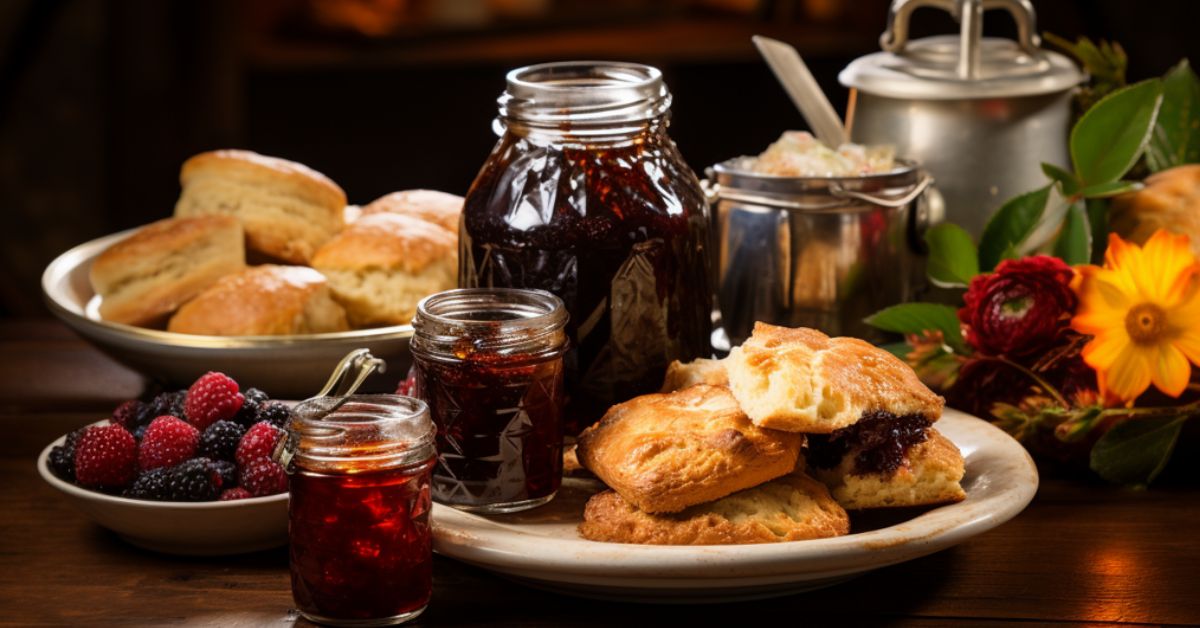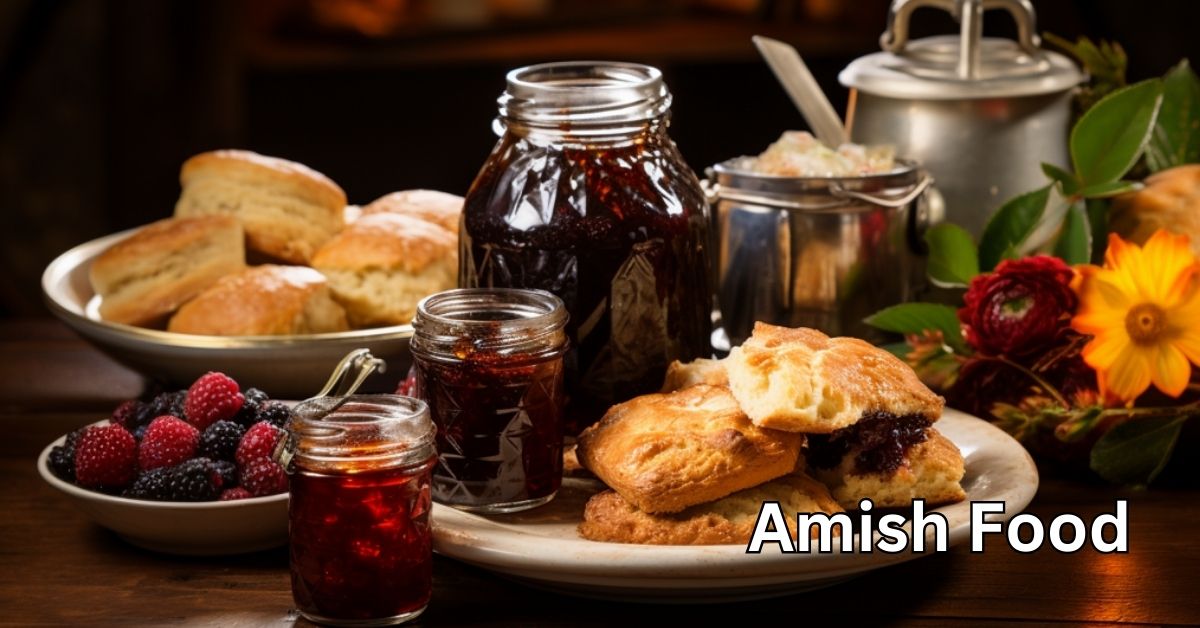
The Amish community, well-known for its commitment to a simple, technology-free lifestyle, also harbors a rich culinary tradition that’s less explored but equally fascinating. Rooted in local produce, frugality, and time-honored methods, Amish food embodies a way of life that puts community and hard work at the center.
This article will guide you through the key characteristics of Amish cuisine, its significance in their community, and how its timeless recipes have been passed down through generations.
Understanding The Traditional Amish Diet
If you’re looking to truly savor the authentic Amish experience, then you’ll absolutely love indulging in the rich and wholesome flavors of the traditional Amish diet.
The Amish have a long-standing tradition of using traditional cooking techniques that have been passed down through generations. These techniques aren’t just practical but also integral to their way of life.
Amish food traditions are deeply rooted in their religious beliefs and community values.
Their commitment to simplicity and self-sufficiency is reflected in every aspect of their food culture. The ingredients they use are often locally sourced and organic, resulting in dishes that are full of flavor and nutrition.
Amish food history dates back centuries, with recipes being handed down from one generation to the next. This oral tradition ensures that their culinary heritage remains intact despite modern influences.
Traditional Amish dishes like shoofly pie, chicken potpie, and homemade bread speak volumes about their dedication to preserving their cultural identity.
Amish food preparation is a labor of love. From canning fruits and vegetables for winter months to making preserves, pickles, and jams, every step is carried out with care and attention to detail. The process may be time-consuming, but it’s worth it for the delectable results.
Amish Cooking Techniques and Methods

In Amish cooking, traditional methods such as slow cooking, baking, canning, and other preservation techniques like fermentation, smoking, and curing are used to create flavorful and long-lasting dishes.
Slow Cooking
One interesting statistic about slow cooking in Amish food is that it can take up to 8 hours for the flavors to fully develop. The result? A rich and savory dish.
Slow cooking involves the use of a slow cooker, also known as a crockpot. It allows food to cook slowly over a long period of time at low temperatures.
This method has several benefits, such as tenderizing tough cuts of meat and enhancing the flavors of ingredients.
The slow cooker recipes are often passed down through generations and hold cultural significance within the Amish community. Tips for successful slow cooking include choosing the right size of slow cooker for your needs, adding liquid to prevent drying out, and not opening the lid frequently to maintain heat.
Baking
Baking is an integral part of Amish food culture, and their techniques have been passed down through generations.
Amish breads, such as the famous Amish Friendship Bread, are known for their soft texture and rich flavor. These breads require a starter dough that’s shared among friends and family to maintain the tradition.
Pastry recipes are also highly valued in Amish baking. From flaky pie crusts to sweet turnovers filled with fruit preserves, these pastries are made with love and attention to detail. The use of quality ingredients like butter and fresh fruits ensures a delectable experience.
For those with dietary restrictions, gluten-free baking has become popular in Amish communities too. They’ve adapted traditional recipes to accommodate those who can’t consume gluten without compromising on taste or texture.
When it comes to holiday desserts, the Amish really know how to create memorable sweets. Pies, cakes, cookies – you name it! These festive treats bring people together during special occasions and celebrations.
Canning and other preservation techniques
In Amish culture, canning is a way of life that ensures the abundance of harvest lasts throughout the year. Canning techniques involve carefully packing fruits and vegetables into glass jars and sealing them with lids to create an airtight environment.
Pickling methods are also popular among the Amish, where vegetables like cucumbers are preserved in vinegar brines infused with spices for a tangy flavor.
Drying foods is another preservation technique used by the Amish community, allowing them to store herbs, fruits, and meats for long periods of time without refrigeration.
Additionally, fermentation is employed to preserve foods like sauerkraut or kimchi through a natural process that enhances flavor and promotes gut health.
To successfully engage in these preservation practices at home, it’s important to follow some key tips: use fresh produce at its peak ripeness, sterilize jars before use, properly seal containers to prevent spoilage, and store canned goods in cool dark spaces away from sunlight.
Fermentation
The fermentation process involves converting sugars into alcohol or acids with the help of microorganisms like yeast or bacteria. This creates an environment where good bacteria can flourish, promoting gut health and aiding digestion.
Fermented foods are not only delicious but also offer numerous health benefits.
They’re rich in probiotics, which support a healthy immune system and improve nutrient absorption. Additionally, fermentation can increase the bioavailability of nutrients in food, making them more easily absorbed by our bodies.
Smoking and Curing
When it comes to smoking techniques, the Amish rely on time-honored methods such as cold smoking, hot smoking, and smoke roasting.
Cold smoking involves exposing the meat to low temperatures for an extended period of time, resulting in a rich smoky flavor without thoroughly cooking the meat. Hot smoking, on the other hand, uses higher temperatures to fully cook and smoke the meat simultaneously.
In addition to smoking, curing plays a vital role in Amish food preservation.
Curing methods like dry curing and brining preserve meats by adding salt or sugar to draw out moisture from the meat. This not only extends its shelf life but also imparts a unique flavor profile.
The combination of these techniques creates irresistible flavors that make Amish smoked and cured meats stand out from others. Whether it’s hickory-smoked bacon or maple-cured ham, each bite brings forth memories of simpler times when food was made with love and care.
Traditional Amish Recipes
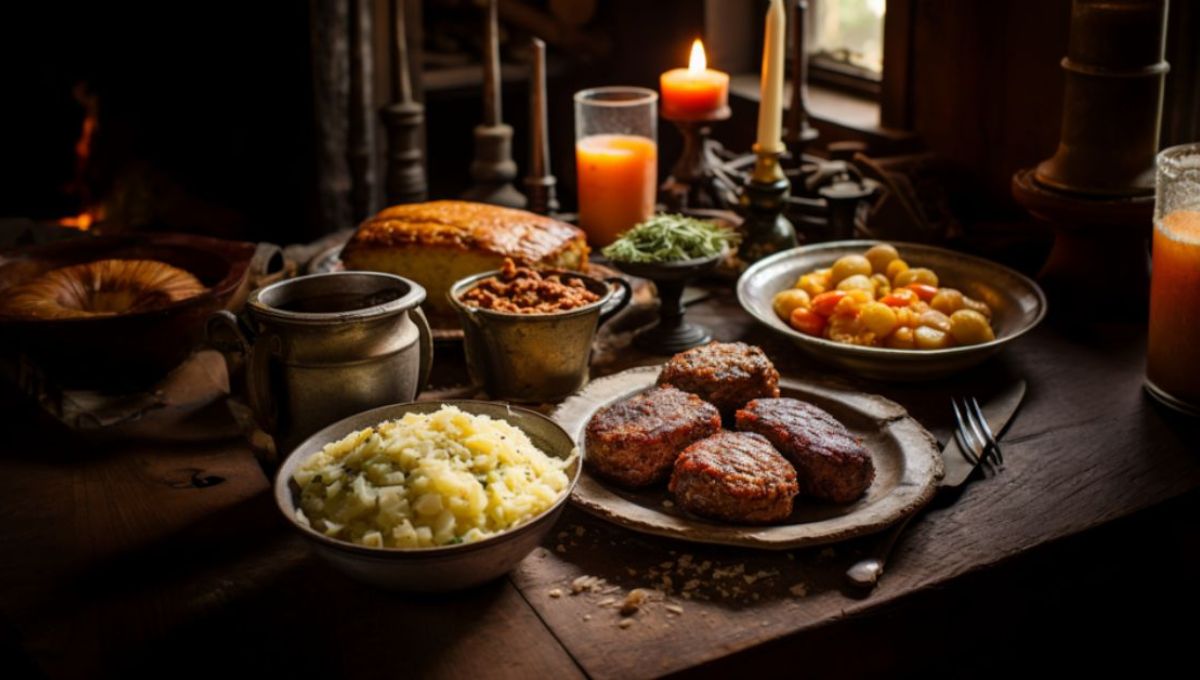
Now, let’s get to the really good part- the recipes!
From breakfast delicacies like homemade buttermilk pancakes and scrapple to hearty main courses such as chicken pot pie and ham loaf, Amish cuisine offers a rich and comforting dining experience.
Their traditional Amish recipes are not only delicious but also offer insights into the cultural heritage and culinary traditions of this fascinating community.
Breakfast Dishes
Amish breakfasts are hearty, traditional, and provide the energy needed for a hard day’s work on the farm. Here are a few staple Amish breakfast dishes:
Amish Baked Oatmeal
One bite of Amish Baked Oatmeal is like a warm hug from Grandma, with its comforting flavors and creamy texture. This traditional Amish dish is a perfect way to start your day.
Made with overnight oats and baked to perfection, it’s both delicious and nutritious.
There are countless variations of baked oatmeal recipes, allowing you to customize it to your liking. Whether you prefer fruity or nutty flavors, this oatmeal breakfast idea will surely satisfy your cravings for a healthy and hearty meal.
Homemade Pancakes with Maple Syrup
Amish homemade pancakes are a simple yet hearty breakfast dish that speaks to the traditional, homemade cooking style of the Amish community.
The batter is often made from basic pantry staples, including all-purpose flour, sugar, baking powder, baking soda, and a pinch of salt for balance. Fresh buttermilk, regular milk, and farm-fresh eggs are whisked into the dry ingredients, adding a rich creaminess that results in fluffy pancakes once cooked.
A generous helping of melted butter is added to the batter, enhancing the texture and lending a subtle, indulgent flavor.
Maple syrup recipes offer a variety of flavors and pancake variations, ensuring there’s something for everyone. Not only is maple syrup a tasty addition, but it also provides health benefits such as antioxidants and minerals.
For those looking for homemade syrup alternatives, there are plenty of options like fruit compotes or honey-based syrups that can be just as satisfying.
If you’re a fan of peanut butter, you might be interested in learning how to do the Amish peanut butter spread.
Scrapple
Amish food traditions have deep roots in Pennsylvania Dutch culture, and scrapple is a beloved dish that reflects this heritage.
There are various regional scrapple recipes, each with its own unique twist on ingredients and spices. Cooking techniques vary as well, from pan-frying to baking.
While not the healthiest option, scrapple does provide some nutritional benefits as it contains protein and essential minerals.
Soft Pretzels
Indulging in a warm soft pretzel is like biting into a piece of pure comfort and delight. Soft pretzels have a long history, dating back to the early German immigrants who settled in Pennsylvania Dutch country.
Traditional recipes call for simple ingredients like flour, water, yeast, and salt. Today, there are various types of soft pretzels available, including the classic twisted shape or pretzel bites. Toppings such as cheese, mustard, or cinnamon sugar can enhance the flavor.
Unlike hard pretzels that are crunchy and dry, soft pretzels offer a chewy texture that is perfect for dipping or enjoying on its own.
Main Courses

When it comes to main courses in Amish cuisine, there are a few standout dishes that you simply must try.
Amish Chicken and Noodles
The comforting Amish chicken and noodles dish is like a warm hug on a chilly evening. This traditional comfort food is a staple in Amish cuisine, showcasing their love for hearty, slow-cooked dishes.
The recipe typically includes tender chicken simmered in a flavorful broth and served over homemade noodles. Passed down through generations, this dish embodies the essence of Amish food traditions and is sure to make you feel like part of the community with every bite.
Ham Loaf with Pineapple Glaze
Amish ham dishes are known for their sweet and savory flavors, and glazing techniques are used to enhance the taste and presentation of these delicious creations.
The pineapple glaze recipe is a staple in Amish cuisine, adding a unique twist to the traditional ham loaf. Meanwhile, variations of ham loaf can include different spices and fillers such as breadcrumbs or vegetables.
Beef and Cabbage Casserole
You’ll be amazed at how tender and flavorful beef and cabbage casserole can be when cooked slowly for hours. This traditional Amish dish showcases the essence of Amish cuisine, with its emphasis on hearty, comforting meals.
The beef casserole recipe is a testament to the Amish community’s commitment to using fresh ingredients and traditional cooking methods.
By utilizing slow cooking techniques, the flavors meld together beautifully, resulting in a satisfying and wholesome meal that’ll make you feel like you belong to this rich culinary heritage.
Pot Roast with Root Vegetables
This mouthwatering dish is made with slow-cooked tender meat and an assortment of flavorful root vegetables such as carrots, potatoes, and onions. The secret to its rich taste lies in the slow cooking process, allowing the flavors to meld together perfectly.
Traditionally prepared by baking in a Dutch oven, this hearty meal is sure to satisfy your craving for comfort food.
Side Dishes

When it comes to Amish side dishes, you can expect a delightful array of flavors and textures.
Amish Potato Salad
Imagine sinking your fork into a creamy, tangy bowl of Amish Potato Salad that transports you back to simpler times, like a warm embrace from your grandmother on a lazy summer afternoon.
This traditional dish has been passed down through generations, with variations found in different Amish communities. The recipe typically includes boiled potatoes, hard-boiled eggs, mayonnaise, mustard, vinegar, and spices.
It’s the perfect side dish for picnics and gatherings, bringing people together through its comforting flavors and rich cultural history.
Buttered Noodles
Buttered noodles recipes vary across Amish communities, but all share a common goal: to create a comforting and indulgent dish.
The best pasta for buttered noodles is typically egg noodles, as they’re soft and absorbent. For added depth of flavor, some recipes include garlic, while others incorporate cheese for a delightful twist.
Sweet and Sour Red Cabbage
This traditional Amish food is prepared by simmering shredded red cabbage with vinegar, sugar, and spices until it becomes tender yet still retains its crispness.
The flavor profile is a delightful combination of sweetness and acidity, complementing any main course. Serve alongside roasted meats or as a topping for hot dogs. Variations include adding apples or bacon for added depth of flavor.
Green Beans with Ham
Dig into a flavorful medley of tender green beans and savory ham, creating a deliciously satisfying side dish that will have you coming back for seconds.
Green beans recipes are common in Amish cuisine, with variations like Amish green bean casserole and Amish green bean salad.
Cooking green beans with ham adds depth to the dish, as the smoky flavor of the meat enhances the natural sweetness of the beans. It’s a comforting and hearty addition to any meal.
Desserts and Sweets

If you’re a dessert lover, then you’re in for a treat with Amish desserts and sweets.
Shoofly Pie
This traditional Amish dessert is a beloved staple in their diet, showcasing the artistry of slow cooking and baking.
Made with molasses, brown sugar, and a crumbly topping, this pie is sweet and gooey. It represents the heart and soul of Amish food culture, providing a sense of belonging to those who savor its flavors.
Amish Whoopie Pies
These delectable delights come in various flavors and are beloved by both locals and tourists alike. Popular Amish Whoopie Pie shops can be found throughout Amish communities, offering not only ready-made pies but also sharing their cherished family recipes.
These pies hold cultural significance as they bring people together to celebrate tradition and indulge in pure bliss.
Apple Dumplings
In Amish food preservation, apple dumplings hold a special place. The Amish have been preserving this traditional dessert for generations, using their own unique varieties of apples grown in their orchards.
These apple festivals celebrate the rich history and culture surrounding Amish food traditions, bringing together communities to share their love for these delectable treats.
Amish Sugar Cookies
Amish Sugar Cookies, sometimes also known as Amish “cool cookies”, are a delightful treat known for their simplicity, softness, and sweet flavor.
These cookies, like most Amish cuisine, rely on simple ingredients most people have on hand. Common ingredients include flour, sugar, eggs, butter, vegetable oil, and a combination of baking soda and cream of tartar. Vanilla extract is often added for flavor. Some variations might also include almond extract or a pinch of nutmeg.
Beverages

When it comes to Amish beverages, you’ll find a variety of refreshingly homemade options.
Homemade Rootbeer
Amish homemade rootbeer is a traditional soda that’s been brewed using unique carbonation techniques for generations. The brewing process involves combining natural ingredients like sassafras, wintergreen, and birch bark to create distinct rootbeer flavors.
This beverage holds historical significance within the Amish community, representing their commitment to self-sufficiency and preserving cultural traditions.
Fresh-Squeezed Lemonade
Their lemonade recipe is simple yet flavorful, making it a popular choice during hot summer days. From classic lemonade to creative variations like strawberry or mint-infused, there’s a refreshing option for everyone.
Plus, besides being delicious, lemonade offers numerous health benefits, such as aiding digestion and boosting immunity.
Mint Iced Tea
Made by infusing fresh mint leaves into black tea, this beverage offers not only a refreshing taste but also numerous health benefits. Mint has been known to aid digestion and provide relief from headaches.
The Amish take pride in their brewing techniques, ensuring that each glass is perfectly balanced and satisfying for those hot summer days.
Cider Punch
There are various variations of cider punch, but they all share the same delicious base of apple cider mixed with other fruit juices and spices. This refreshing drink is often served at social gatherings and family meals, bringing people together to enjoy its sweet and tangy flavors.
If you’re interested in trying your hand at making Amish cider punch, there are many recipes available online that provide step-by-step instructions. Not only is it a tasty addition to any event, but it also offers some health benefits. Apple cider contains antioxidants and vitamins that can boost your immune system and improve digestion.
The Connection Between Amish Food and Health
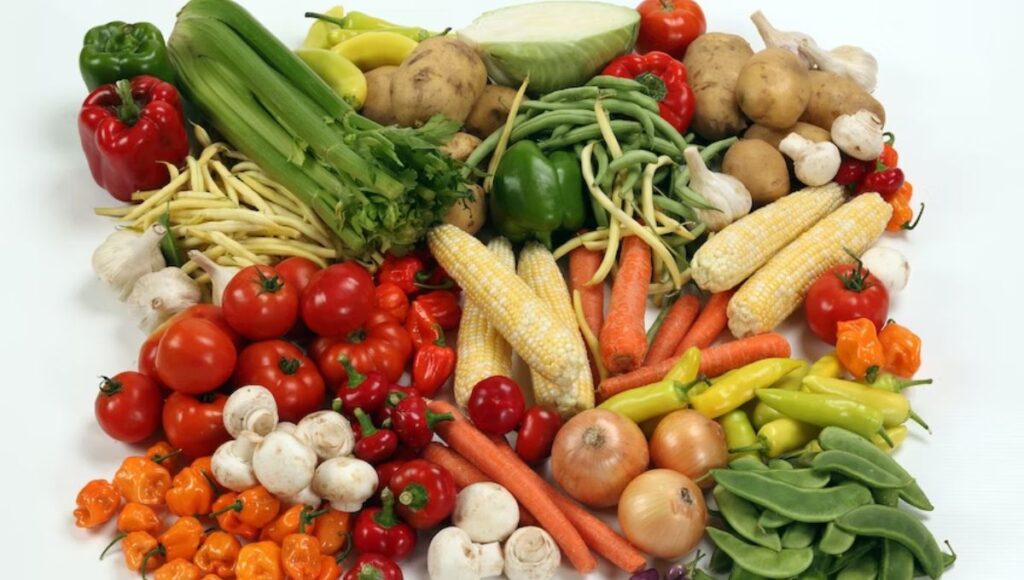
Indulging in Amish food can be a delightful and wholesome way to nourish your body and soul. The traditional Amish diet is characterized by its focus on simple, hearty ingredients that provide essential nutrients.
Staples such as fresh fruits, vegetables, whole grains, and lean meats form the foundation of Amish cuisine.
One key aspect of the Amish approach to cooking is their use of slow cooking techniques. This method allows flavors to develop slowly over time, resulting in rich and delicious meals that are bursting with taste.
By using this technique, they also preserve more nutrients in their dishes compared to methods like frying or boiling.
Amish food is known for its emphasis on natural ingredients and minimal processing. This commitment to using fresh and unprocessed foods ensures that you are consuming meals that are free from artificial additives or preservatives. By avoiding these harmful substances, you can promote better health and well-being.
Moreover, the Amish lifestyle promotes physical activity through daily chores such as farming or manual labor. Combined with their nutritious diet, this active lifestyle contributes to overall good health.
Amish Food and Sustainability
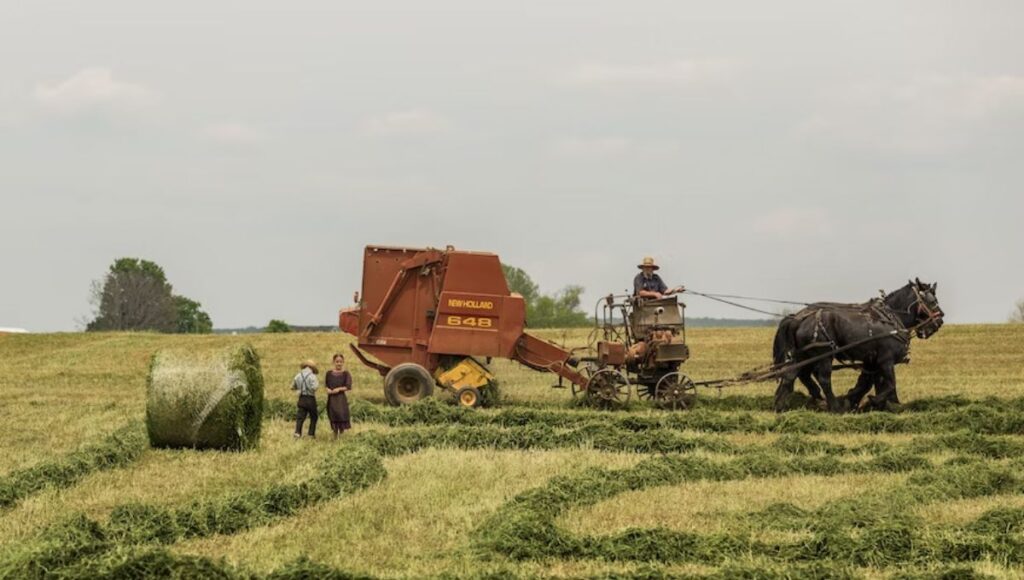
When it comes to farming practices, the Amish have a deep-rooted commitment to sustainability. They prioritize organic and natural methods, avoiding the use of synthetic fertilizers and pesticides. This not only ensures the health and well-being of their crops and livestock but also helps sustain the environment for future generations.
Additionally, managing food waste is an integral part of Amish culture. They believe in using every part of the harvested produce or animal, minimizing waste and maximizing resourcefulness. This approach not only demonstrates their frugality but also contributes to a sustainable food system that respects nature’s abundance.
Farming Practices
Amish farmers lovingly tend to their bountiful crops, employing traditional farming practices passed down through generations. Their commitment to sustainable agriculture is evident in their organic farming techniques and emphasis on crop rotation.
By utilizing these methods, Amish farmers prioritize the health of the soil, ensuring its long-term fertility and productivity. Crop rotation is a fundamental practice among Amish farmers.
They carefully plan which crops to grow in each field, rotating them annually to prevent soil depletion and nutrient imbalances. This technique not only maintains soil health but also minimizes the need for chemical fertilizers or pesticides.
Furthermore, Amish farmers prioritize organic farming methods by avoiding synthetic chemicals and genetically modified organisms (GMOs). Instead, they rely on natural fertilizers such as compost and manure to nourish their crops while minimizing environmental harm.
These traditional farming practices embraced by Amish communities demonstrate a deep understanding of sustainable agriculture’s importance. By nurturing the land with care and respect, they ensure a bountiful harvest for future generations while preserving the integrity of their cultural heritage.
Managing Food Waste

Amish communities have long been known for their commitment to reducing waste and living sustainably. One way they achieve this is through composting options.
By composting food scraps, you not only reduce the amount of waste sent to landfills but also create nutrient-rich soil that can be used in gardening or farming.
Additionally, many Amish communities participate in food donation programs, ensuring that excess food goes to those in need instead of being wasted. They also prioritize sustainable packaging, using reusable containers or biodegradable materials whenever possible.
Community initiatives play a vital role as well, with members working together to implement recycling programs and promote responsible consumption habits. By following these practices, we can all contribute towards a more sustainable future while fostering a sense of belonging within our communities.
The Perfect Ending: Amish Food at Its Best
So there you have it, a comprehensive look into the world of Amish food. From their traditional diet to their cooking techniques and recipes, the Amish truly have a unique culinary heritage.
One interesting statistic to note is that despite their rich and hearty cuisine, the Amish have lower rates of obesity and chronic diseases compared to the general population. This can be attributed to their reliance on simple, wholesome ingredients and their active lifestyle.
By embracing sustainable farming practices and preserving old-world traditions, the Amish continue to nourish both body and soul through their delicious food.
